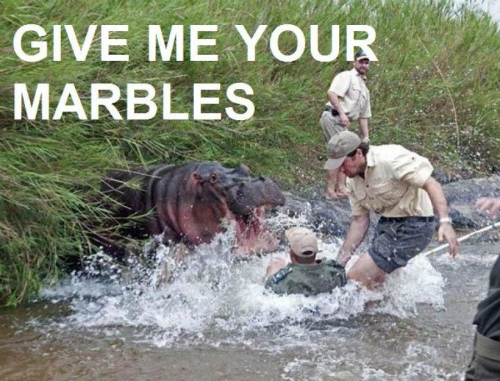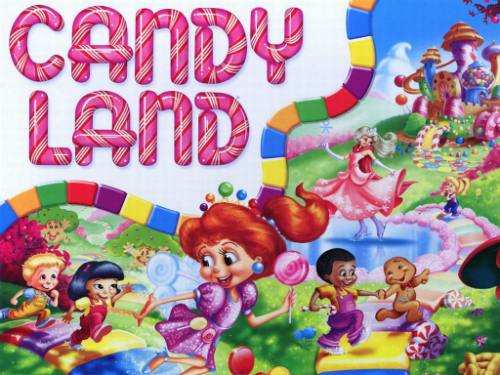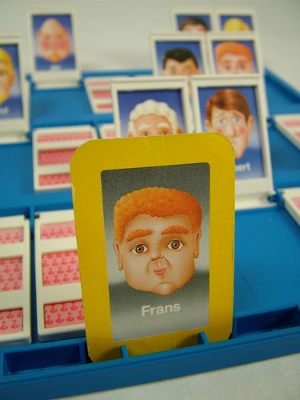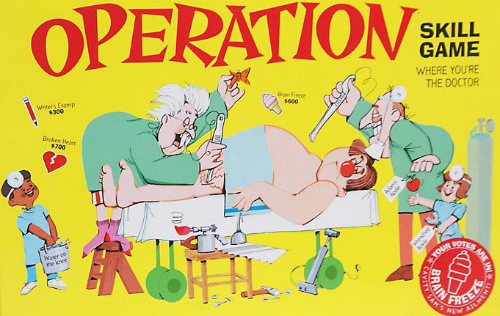Fair warning: you’re going to notice a theme this week, if you haven’t already, and I’m not just talking about Classic Games. This is something far, far more sinister than a nostalgic trip into our collective childhood.
Yep, I’m talking about the dreaded Roll And Move. You’re bound to see them all over the site during this week and next, people, so remember to take proper precautions and never (ever) use your dice unsupervised.
I’ll give you a moment to collect yourself, then we’re headlong onto a massive-ish recap of classic childhood games, from Candyland to Guess Who. These aren’t reviews, really, because there’s no way that I can seriously sit here and review Hungry Hungry Hippos. Consider it more as a nostalgia trip.
Continue to check back for more articles and updates on some of your other favorite old games. For now, though, courage.
Candy Land
Maybe it’s my sweet tooth talking, but Candy Land was always one of my favorites. I thought the shortcuts, those quick little routes that you could use if you were lucky enough to land in just the right space, were super fun. I also enjoyed that the game had a storyline, as simplistic and linear as it was. I was an Immersionist from day one, apparently.
Candyland is the colorful adventure of a few enterprising kids in a world made of candy. King Kandy has gone missing, and it’s up to you and your friends to find him…in his castle. On the way, you meet with fantastical candy creations, such as Grandma Nutt (peanut brittle extraordinaire) and Queen Frostine (chillingly beautiful regent of the Ice Cream Sea).
Well, actually, you don’t “meet” them so much as you “pass by them without interacting at all,” because the game is essentially a roll-and-move without dice. Instead, you draw cards that have either one or two colored squares on them, then you move to either the first or second square of that color along the board’s winding track. You can also draw cards that send you to certain places, like the Ice Cream Sea or evil Lord Licorice’s castle.
Of course, though the core mechanic has stayed the same, the graphics have been jazzed up a bit over the years. Characters have come and gone in an attempt to make the game seem like it’s been updated. The Queen Frostine of my childhood didn’t wear fishnets. Still, of all the things your kids are exposed to, I doubt Candy Land’s new images are really going to be the straw that sends them spiraling into promiscuity and drug abuse. Of course, opinions on this may differ.
Anyway, that’s about it. The game is so incredibly simple, but that’s one of the reasons for its popularity. It’s bright, colorful, requires no reading or counting to higher than two. It’s perfect for young children and their parental overseers as the first foray into the degenerate lifestyle that is gaming.
Guess Who
Well, hello there racism. It’s been at least a few articles since I’ve discussed you on this site, so I suppose it’s about time that you reared your head again.
And speaking of heads and racism, Guess Who! For those who missed this one, it’s a two-player deduction game. Each player has a 3-D rack containing rows of different faces. Some faces are thin, some have large noses, some are female, one or two are black…you get the drift.
Each player randomly chooses a person to be for the duration of the game. The other player has to guess who (get it??) that character is using only yes/no questions to guide them. As they eliminate certain qualities, they flip those faces down on their board until only one face remains. If they’re smart, the face will be that of the other player’s character.
That’s the premise. It’s actually not a bad game for kids who are just above preschool level, but the fun correlates directly with the amount of difficulty you have making calculated guesses, and as soon as you figure out the right questions to ask, the game becomes more of a prolonged chore than a fun-filled family activity. Also, if your character is not white, you’re probably going to lose fairly quickly. Given that there are only about three people of color represented in the game, it’s a fairly big tell.
Honestly, I don’t mean to sound too down on Guess Who. I used to love this game. But man, sometimes you just run a game into the ground, you know? I feel about Guess Who the same way I feel about the Fuze Iced Tea I drank continuously on my fifteen-hour drive to Gen Con: it started off well enough but ended up leaving me depressed, regretful, and queasy.
Hungry Hungry Hippos
 Om nom nom, marbles! Marbles are my favorite! Marbles are the best!
Om nom nom, marbles! Marbles are my favorite! Marbles are the best!
Honestly, this frantic dexterity(ish) game is a lot of fun. Each player controls a hippo – or, more accurately, a hippo’s upper jaw. Players release a bevvy of marbles into the center space between all the hippos, then slam on the little plastic levers that control the hippo’s mouths in an effort to eat as many marbles as possible.
There is, as far as I or modern science can tell, no real strategy. If you’re on the skilled side, you can sometimes get the marbles you’re releasing to hover near your own hippo for awhile, but I think that depends more on the angle of your floor than anything else. I guarantee that most of my wins were based more on the shoddy construction of my 1970’s townhouse than on any real aptitude for hippo feeding.
Still, for lacking in any real depth, this one is a lot of fun. It’s the board game equivalent of a classic button-masher, and its frantic pace and simple gameplay is fun for kids of almost all ages.
Operation
Hungry, Hungry Hippos is to Operation what Batman: Beyond is to Batman: The Animated Series. They’re both games, and they’re both involving the same mechanics, at least insofar as dexterity is concerned. But one is decidedly more complex than the other.
Operation is the game of my nightmares. I have naturally shaky hands – all the women in my family do – and I hate loud, surprising noises. So when you combine the two, well, let’s just say that I have played this one with the batteries removed.
Also, I’m pretty sure the funny bone isn’t actually a bone.
In Operation, you play a surgeon operating on a very strange patient. His body is full of literal translations of metaphorical anatomical components, and it’s up to you to remove them. Get the apple out of his throat and the butterflies out of his stomach, but do it without touching the edges of his incisions with your definitely-not-sterile tweezers. If you mess up, you will be electrocuted and DIE!
Well, no. Not really. You’ll actually just set off a little buzzer, but I hated that buzzer soooooo much. Most children develop that reaction to Operation. It was like flames…on the side of my face…
Wait, now I’m quoting Clue, and Clue isn’t even one of the games I was supposed to write about. So, you know, I’m going to take that as a sign and end this here. Regardless of whether you have fond or neurotic memories about these classic games, looking back at pieces of your childhood with the perspective of an adult is always interesting. They may not always be the most elegant of games, and some can argue they aren’t even true games, but they give us the first glimpses into what games could offer us. If we’re lucky, we never close that excitement they brought us.
Photo Credits: Candy Land by jana says; Guess Who by Back to the Eighties; Real Hippos by jpegger supreme; Operation by Geek Nation.



